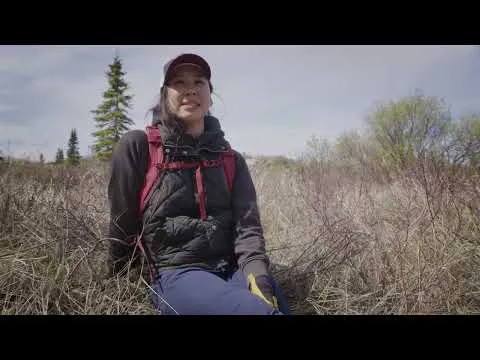Alaska, a vast land stretching across 6,600 miles of coastline, is not only a treasured gem of the United States but also one of the planet’s last great wildernesses. This region boasts incredible biodiversity, from polar bears and caribou to humpback whales and countless seabirds. For thousands of years, this abundance has sustained Alaska’s Indigenous cultures, whose traditions of hunting, fishing, and gathering are deeply intertwined with the natural rhythm of life. However, this pristine haven is facing severe environmental challenges that demand significant efforts to maintain the delicate balance between nature and humanity.
Coastal Erosion: An Urgent Challenge in Alaska
One of the most pressing environmental issues Alaska faces is the accelerating coastal erosion. This phenomenon, while a natural geological process, has been significantly exacerbated by climate change. Rising global temperatures have led to Arctic ice melt, weakening the sea ice that historically acted as a natural defense for Alaska’s coastline. Without this protective barrier, the coastline becomes exposed and more vulnerable to the powerful forces of waves and storms.
Coastal erosion in Alaska is occurring at an alarming rate, especially in Arctic and Western Alaska’s coastal areas, where the coastline consists largely of soft, easily erodible sediments. Thawing permafrost—soil frozen year-round—also weakens the structural integrity of the coastline, leading to land subsidence and washouts. The consequences of coastal erosion are severe: loss of land and habitats, destruction of critical infrastructure like roads, homes, and public facilities, and threats to the safety and livelihoods of coastal communities.

Coastal Protection Projects and Erosion Response
Faced with the escalating coastal erosion crisis, Alaska’s government and communities have launched several initiatives and measures aimed at protecting the coastline and mitigating the negative impacts. These projects focus on various aspects, from constructing coastal defense structures to relocating communities and conducting scientific research.
1. Construction of Coastal Defense Structures:
One of the most common solutions is building coastal defense structures such as seawalls, rock revetments, and breakwaters. These structures are designed to reduce wave energy hitting the shore, thereby slowing down erosion. However, constructing these barriers requires significant financial resources and must be carefully implemented to avoid unintended negative impacts on coastal ecosystems.
2. Restoration and Conservation of Natural Ecosystems:
Another approach focuses on restoring and conserving natural ecosystems that have protective functions for the coastline, such as mangroves and sand dunes. These ecosystems act as natural barriers by lessening wave energy and stabilizing the shoreline. Restoration projects often involve replanting mangroves, rebuilding sand dunes, and removing invasive species.
3. Community Relocation:
In some cases, coastal erosion progresses so rapidly and severely that protection in place becomes unfeasible or economically impractical. In these situations, relocating communities to safer areas might be the only viable option. However, relocation processes are complex and challenging, requiring thorough preparation and active involvement from local communities.
4. Scientific Research and Monitoring:
Effective responses to coastal erosion rely heavily on scientific research and continuous monitoring efforts. Scientists are working to better understand erosion processes, predict future erosion rates, and assess the efficacy of various coastal protection methods. Coastal monitoring programs track shoreline changes over time, providing crucial data for informed management decisions.
Diverse Environmental Protection Projects in Alaska
Beyond addressing coastal erosion, Alaska is home to numerous other environmental protection initiatives focusing on biodiversity conservation, sustainable resource management, and climate change adaptation.
1. Biodiversity Conservation:
Alaska is the habitat of many rare and endangered wildlife species, including polar bears, sea otters, and bowhead whales. Biodiversity conservation projects in Alaska aim to protect the natural habitats of these species, prevent illegal hunting, and minimize human-induced impacts. National parks and nature reserves play a significant role in preserving Alaska’s biodiversity.
2. Sustainable Resource Management:
As a resource-rich state, Alaska possesses abundant natural assets such as oil, gas, minerals, and seafood. However, resource extraction must be handled sustainably to avoid causing long-term environmental harm. Sustainable resource management projects in Alaska emphasize eco-friendly extraction practices, stringent oversight of extraction activities, and post-extraction environmental restoration.
3. Climate Change Adaptation:
Climate change poses one of the greatest environmental challenges to Alaska. In addition to coastal erosion, it causes other significant impacts like thawing permafrost, ecosystem shifts, and increased wildfire risks. Climate change adaptation projects in Alaska focus on reducing greenhouse gas emissions, enhancing the resilience of communities and ecosystems against climate impacts, and promoting renewable energy development.
Toward a Greener Future for Alaska
Protecting Alaska’s environment is not only the responsibility of government and environmental organizations but also a shared mission for everyone. Individuals can contribute to Alaska’s conservation efforts through simple everyday actions such as conserving energy, minimizing waste, and supporting eco-friendly products.
With the collective efforts of communities, support from scientific advancements, and effective policies, Alaska can overcome current environmental challenges and pave the way for a greener, sustainable future for coming generations. These environmental protection projects in Alaska not only benefit the state but also contribute to global conservation efforts, highlighting the importance of taking action for a healthier planet.